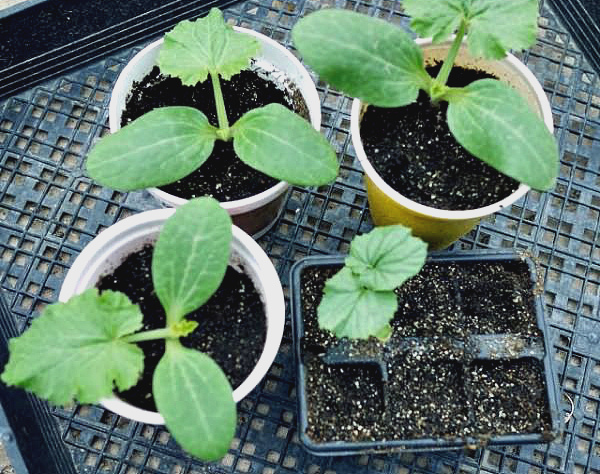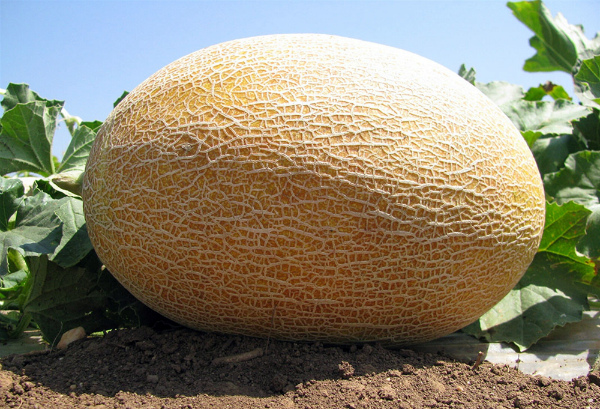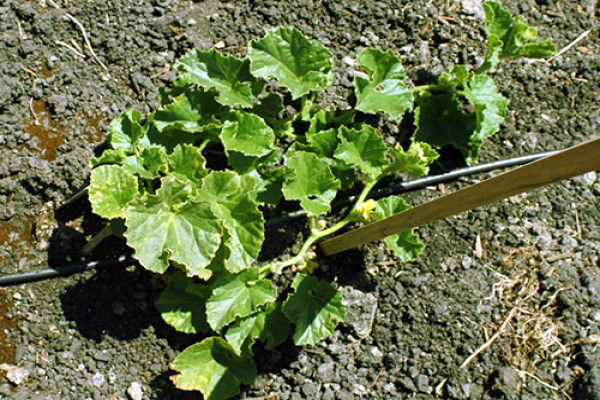How to grow Amal melon and why it is good
Content
Description and characteristics of the variety
The description of the variety should begin with the fact that it has high resistance against the three most dangerous fungal diseases: fusarium, dry rot and downy mildew. This means that the harvest will be safe during the period of high activity of the fungus - in the second half of summer.
However, this variety is valued not only for immunity, but also for large fruits, the average weight of which ranges from 2.5 to 3 kilograms, and with a successful combination of circumstances reaches 4 kilograms. Amal fruits are elongated, the peel is creamy yellow, dense and smooth, with a fine continuous mesh. The pulp is slightly darker than the peel, rich creamy color, very tender and juicy with a strong odor. But the chamber where the seeds are located is small. 100 grams of melon pulp contains up to 11% dry matter and about 7% sugar.
The variety has a strong, very developed root system, a bush creeping along the ground. The structure of the plant allows you to get about 55 tons of fruits from 1 hectare (provided that about 7 thousand plants are planted), since Amal fruits ripen almost simultaneously. Another positive point of the variety is that it is convenient to transport, the strong peel does not allow damage to the fruits.
A significant disadvantage is that the melon is very whimsical to the conditions, despite the fact that it is thermophilic and drought-resistant. Cultivation should take place without the presence of drafts, with timely feeding, watering and pinching.
Planting methods
The planting method should be chosen based on the region in which the melon will grow. Sometimes it is better to plant seeds directly in the ground - this option is suitable for regions with mild, warm climates. Sometimes seedlings should be grown, especially if it is late in your area and the summer is short. In the northern regions, you can grow melon in a greenhouse, reliably protecting it from weather tricks.
The most popular way to grow this variety is by seedlings. To do this, you will need containers with peat to protect the roots of the seedlings when transplanting to the garden. After at least 5% of the seeds have germinated, you can transplant the plant into open ground or a greenhouse.
When Amal is planted in an open-air garden bed, a shallow hole is dug and 2-3 seeds are placed in it, and then sprinkled with earth.
Seat selection
Care should be taken when choosing a place to plant this melon variety. The plant should receive a lot of sunlight, but it should not be blown by the wind from all directions.You need a fertile soil with low acidity, so that water does not stagnate in it.
If we talk about predecessors, the interaction of melon and potatoes, cabbage, legumes is positively distinguished. But after pumpkin cultivation will turn into a failure - the plants do not survive after each other.
Soil and seed preparation
Soil preparation includes deep plowing, fertilization and disinfection. If the soil is acidic, then lime or dolomite flour should be added.
It is easy to find out what is the acidity of the soil on your site. You can pour a lump of earth with vinegar (9%). The appearance of foam means that the soil is alkaline, but its absence is a sign that the soil is very acidic.
You can also apply the old folk method. Tear off 4 leaves from black currant or bird cherry, pour over them with boiling water and let the infusion cool. Then add 1 tablespoon of soil from the plot, stir. When the earth settles to the bottom of a glass or jar, the acidity can be determined by color. Shades of red indicate a high acidity of the soil, shades of green indicate that the acidity is low, but if the water turns blue, then the acidity is neutral.
In addition, the seeds should be carefully treated. Disinfection is carried out by soaking the seed in a weak solution of potassium permanganate for 25-30 minutes.
Further preparation for planting is quite simple: the seeds are placed in water at room temperature for 24 hours. During this time, the seeds awaken from hibernation. After soaking for 24 hours, lay them out on a damp cloth, place in a warm place. In this way, seeds that are not suitable for sowing are rejected, since non-germinated seeds must be thrown away.
Landing technology
Amal can only be planted when the ground temperature rises to + 16 ° C. In the selected area, mark the holes so that there is about 65 centimeters between the plants in one row, and at least 1.4 meters between the rows. At the bottom of each hole, put a little humus mixed with earth, then put 3-4 seeds. This increases the likelihood that at least one sprout will appear in the hole. The seeds need to be deepened by 5 centimeters, and watered well.
When planting seedlings, the location of the holes is the same, only the seedlings must be placed in the hole so that the stems are higher than the irrigation hole. When watering, try to keep water away from the sprout itself.
When shoots appear and the first leaves are formed on them, remove weak shoots from the garden.
Care
Considering how capricious the Amal variety is, it needs the most thorough care.
First of all, remember that you cannot water the melon with cold water - this slows down the cultivation, spoils the root system and creates favorable conditions for the development of fungal spores. Also, do not pour water directly on the stems and leaves of the melon, only on the ground.
In the first month, you need to carefully weed and loosen the ground. Young seedlings cannot yet live them out on their own, so do the plant a favor and it will thank you with a good harvest.
The variety requires feeding twice during the growing season. For the first time, nitrogen and phosphorus fertilizers are applied when the first leaf appears. The second time - after two weeks, but with the addition of potassium.
In this mode, cultivation takes place until flowering. But during the period of flower formation, pollination and the formation of ovaries, you need to ensure that the melon receives enough light and heat.
Growing, although it is fraught with some difficulties, but at the same time the Amal variety gives a rich harvest of delicious melons, so all the effort invested pays off.
Harvesting
Amal ripens at the end of August. This can be determined by a change in the color of the peel - it becomes darker. Moreover, the pumpkin is easily separated from the stalk.
As the fruits ripen, they need to be harvested, and unripe ones should be removed along with the ripe ones. Thus, the harvest takes place about 6-7 times.
If you are going to transport pumpkins, then it is better to collect them before ripening, together with the stalk - this way it will be better preserved.
Video "Packing Amal F1 Melon Seeds"
If you are purchasing seeds, you need to make the right choice. This video will help you figure out what information should be on the packaging of Amal F1 melon seeds.





